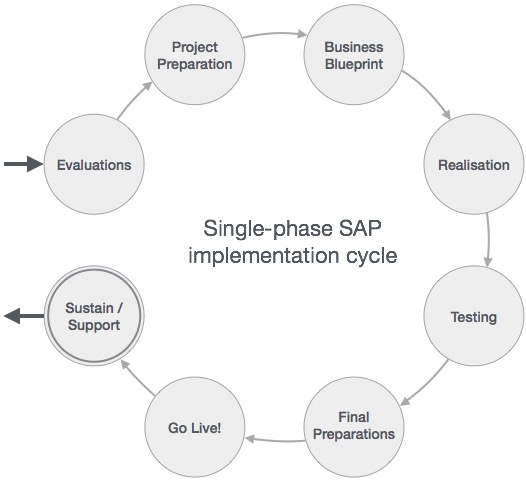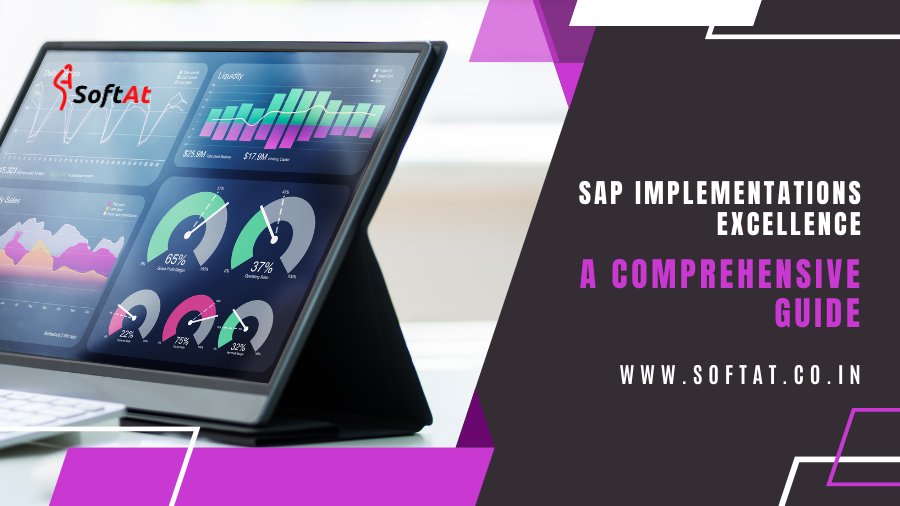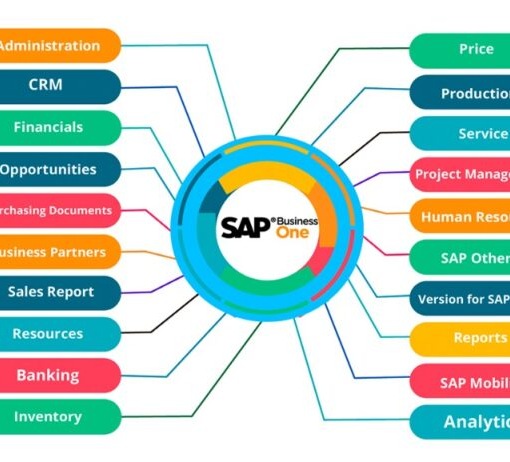In the ever-evolving landscape of enterprise solutions, SAP implementations stands as a pivotal undertaking for businesses aiming to streamline operations, enhance efficiency, and drive digital transformation. Join us as we delve into the intricacies of SAP implementation, providing a definitive guide that surpasses conventional insights.
Understanding SAP Implementations
SAP implementations is the process of integrating SAP software into an organization’s existing infrastructure, spanning various modules such as finance, logistics, and human resources. This strategic deployment of SAP solutions is geared towards optimizing business processes, fostering innovation, and ultimately achieving organizational objectives.
The SAP Implementations Lifecycle

Key Components of Successful SAP Implementations
1. Thorough Planning
A meticulous planning phase is the cornerstone of successful SAP implementations. This involves defining project scope, identifying key stakeholders, and establishing a robust project timeline.
2. Customization and Configuration
Tailoring SAP solutions to align with specific business needs is critical. Configuration involves adapting the system settings, while customization allows for the development of unique functionalities to address unique requirements.
3. Rigorous Testing
Quality assurance is paramount in SAP implementations. Rigorous testing, including unit testing, integration testing, and user acceptance testing, ensures that the system functions seamlessly and meets user expectations.
4. Comprehensive Training Programs
Empowering end-users with in-depth training is essential for a smooth transition to SAP. Training programs should cover system functionalities, best practices, and troubleshooting procedures.
Common Challenges and How to Overcome Them
1. Resistance to Change
Solution: Foster a culture of change by highlighting the benefits of implementation, addressing concerns, and involving key stakeholders in the process.
2. Data Migration Issues
Solution: Implement a robust data migration strategy, conduct thorough data cleansing, and employ data validation measures to ensure accuracy.
3. Scope Creep
Solution: Clearly define the project scope from the outset, involve stakeholders in scope discussions, and implement change control mechanisms.
SAP Implementations Best Practices
1. Collaborative Project Management
Adopting a collaborative project management approach ensures alignment between business goals and implementation strategies.
2. Continuous Monitoring and Evaluation
Regularly monitor system performance, user feedback, and key performance indicators to identify areas for improvement and optimization.
3. Ongoing Support and Maintenance
Establishing a dedicated support and maintenance framework ensures timely issue resolution, system updates, and alignment with evolving business needs.
Conclusion
In conclusion, navigating the complexities of SAP implementations requires a strategic and holistic approach. Our comprehensive guide aims to go beyond the conventional, providing insights that empower businesses to embark on a journey of SAP excellence. From the intricacies of the implementation lifecycle to overcoming common challenges and embracing best practices, this guide is your roadmap to unleashing the full potential of SAP solutions within your organization.
FAQs
1. What is the SAP implementations process?
The implementation process involves key phases: Project Preparation (for project acquisition and client evaluation), Business Blueprint (analyzing existing processes), Realization (configuring and fine-tuning SAP), Testing (rigorous tests), Final Preparation (comprehensive testing, training, and cutover), and Manage the Change (communicating changes introduced by the new ERP system).
2. What is the implementation?
It is the most common way of arranging, planning, and sending the SAP programming suite to an association. SAP is a German organization that gives venture asset arranging (ERP) programming. The SAP programming suite is a bunch of business applications that assist associations with dealing with their funds, tasks, and client connections
3. What is SAP ERP implementation?
SAP ERP implementation is the most common way of designing and modifying SAP venture asset arranging (ERP) programming to address a business’ issues. SAP ERP concentrates information for simple access across all offices.
4. How do you implement SAP successfully?
- Prioritize business processes
- Define clear goals and objectives
- Have a clearly defined project scope
- Map future state business processes early on
- Ensure effective project management
- Ensure commitment from company executives
- Have good change management and communication
- Anticipate problems and stay one step ahead
5. What are the 5 steps of implementation?
- Project Preparation: This phase provides initial planning and preparation for the SAP project.
- Business Blueprint: In this phase, SAP consultants configure business processes and technical requirements based on the business blueprint.
- Realization: This phase involves customization.
- Final Preparation: This phase involves polishing.
- Go Live and Support: This phase is considered the grand finale.





